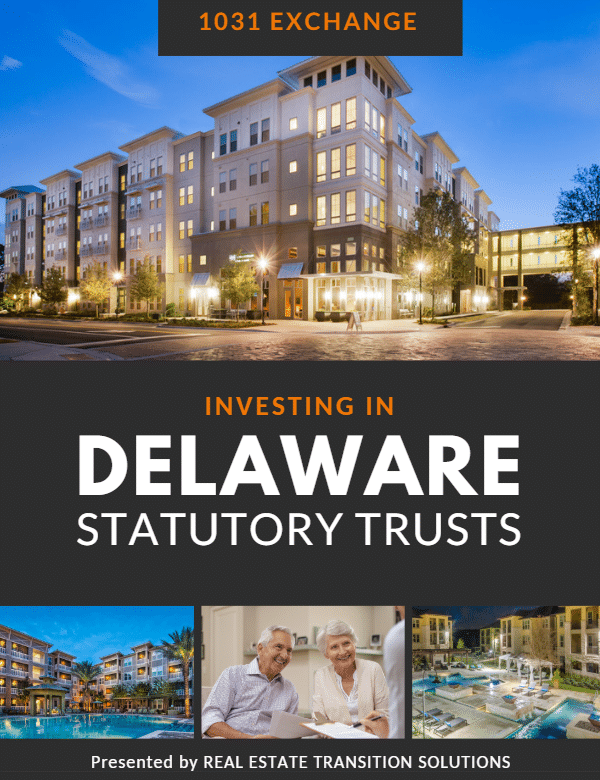Table of Contents
Rethinking the dual nature of debt in real estate investment.
In both personal finance and investments, debt often evokes negative perceptions. However, in real estate, it is nuanced tool that can drive wealth creation when used strategically. Debt can be a powerful instrument when applied judiciously. To use debt effectively, understanding the distinction between productive and counterproductive debt is important. Productive debt contributes to an investment strategy, while counterproductive debt typically burdens an investment and unnecessarily increases its risk profile.
Within the context of real estate, understanding this contrast is essential. Effective use of debt can amplify returns and open doors to opportunities that would otherwise be inaccessible. This article examines the multifaceted role of debt in real estate, exploring its impact on investment strategies and outcomes.
Productive Debt vs. Counterproductive Debt

Productive debt, for purposes of this article, refers to borrowed funds that are used to acquire or improve investment real estate in which the projected return on the investment is higher with debt than without. This type of debt is characterized by its ability to generate cash flow and/or appreciation at the property level that exceeds the cost of borrowing.
Key aspects of productive debt include:
- Income Generation: The debt is used to finance assets that produce regular income, such as investment properties. When the portion of the property acquired with debt generates more cash flow (either immediately or eventually) than the cost of the debt, the debt is considered “accretive.”
- Asset Appreciation: The borrowed funds are invested in properties or improvements that are likely to increase in value over time.
- Wealth Creation: The return on investment from the debt-financed asset exceeds the cost of the debt itself, leading to increased returns for the investor.
- Strategic Leverage: It allows investors to acquire larger or more valuable properties than they could with their own capital alone, thus amplifying returns on the equity invested.
- Tax Advantages: In some cases, such as with certain real estate investments, the interest on productive debt may be tax-deductible, further enhancing the financial benefit. Additionally, acquiring properties with debt may create new depreciable basis which in turn can lead to more tax sheltering for investors.
Productive debt is contrasted with counterproductive debt, which typically finances depreciating assets or non-essential expenditures. The strategic use of productive debt is a key concept in real estate investment, particularly in transactions such as 1031 Exchanges and ownership structures such as Delaware Statutory Trusts (DSTs), where it can be leveraged to optimize investment outcomes and portfolio growth.
Counterproductive debt, in the context of real estate investment, refers to borrowed funds that do not contribute to the enhancement of financial returns. This type of debt is characterized by its tendency to drain resources without providing return on investment.
Key aspects of counterproductive debt include:
- Financing Depreciating Assets: The debt is used to purchase items that lose value over time.
- Non-Income Generating: Rarely is debt considered productive when it is used to acquire assets that do not generate income.
- High-Interest Consumer Debt: Often associated with credit cards or personal loans used for non-essential purchases.
- Negative Impact on Cash Flow: The borrowing cost or interest expense exceed the income generated from the portion of the asset owned with debt (i.e. non-accretive debt). Note, while there may be a case for utilizing debt that is non-accretive at the onset of the investment, these situations should be carefully considered for the debt to be considered productive.
- Limited or No Tax Advantages: Unlike some forms of productive debt, the interest on counterproductive debt is typically non-tax-deductible.
In real estate investment, counterproductive debt might include borrowing to finance renovations that do not sufficiently increase rental income or property value. Additionally, applying debt to real estate in order to fund personal expenditures is almost always considered counterproductive. It is important for investors to distinguish between productive and counterproductive debt to make informed financial decisions and optimize their investment strategies.
Debt Structures in Real Estate
Real estate finance encompasses various debt types, each with distinct implications and strategic applications.
Recourse vs. Non-Recourse Debt
Recourse debt places personal liability on the borrower. In default scenarios, lenders can claim both the collateralized property and other assets owned by the borrower, if needed, to satisfy the debt. The increased lender security translates to heightened personal risk for borrowers. Conversely, non-recourse debt limites lender claimes to the collateralized and encumbered property. For investors, non-recourse loans can be advantageous, reducing risk due to the buffer against personal bankruptcy.
Debt Types in Real Estate Investment Structures
Investment structures often dictate debt types. Fee simple ownership properties typically involve recourse debt. Fee simple arrangements entail complete control but also often full liability, unless a borrower is utilizing somewhat conservative leverage and has a demonstratable track record of effective asset and property management.
Delaware Statutory Trusts (DSTs) utilize non-recourse debt. DSTs enable investors to pool capital to acquire large, institutional-quality properties that might be individually unattainable. The non-recourse nature of DST financing aligns with passive investment approaches, clearly delineating the DST investments from personal assets.
Debt Dynamics in 1031 Exchanges and DSTs

Debt plays a critical role in 1031 Exchanges and Delaware Statutory Trust investments. Understanding its function within these frameworks is essential for investors aiming to optimize portfolio growth.
The 1031 Exchange, referencing Section 1031 of the U.S. Internal Revenue Code, allows capital gains tax deferral on investment property sales by reinvesting proceeds into like-kind properties. Like-kind properties in real estate encompasses virtually any type of property held for investment or business purposes. This broad definition refers to the nature or character of the property rather than its grade or quality, allowing investors to exchange diverse property types, such as an apartment building for raw land or retail space for an office building. A key requirement is that both the relinquished and replacement properties must be held for investment or business use, not personal purposes.
To fully defer txes, the debt on the replacement property must equal or exceed that on the relinquished property. Balancing debt in a 1031 Exchange is critical as excessive debt could over-leverage the new investment, while insufficient debt could trigger tax liabilities.
The Role of Debt in 1031 Exchanges
Debt treatment is a key component of 1031 Exchanges that directly impacts tax outcomes as any decrease in debt is considered “boot” and becomes taxable. Boot refers to any portion of the exchange that is not reinvested in like-kind property, potentially resulting in immediate tax liabilities. With a 1031 Exchange, investors can restructure debt by optimizing loan-to-value (LTV) ratios, converting variable-rate to fixed-rate financing, or utilizing assumed loans to achieve better terms. Delaware Statutory Trust investments with pre-established debt structures can also simplify debt replacement requirements.
The Role of Debt in DST Investments
DSTs offer a mechanism for participating in real estate investments with non-recourse debt. The LTV ratio indicates the proportion of property value financed through debt. A higher LTV pairs more debt with the equity purchased, potentially increasing equity returns, but also introducing greater risk. A lower LTV ratio signifies less debt accompanying the equity. While this might suggest reduced risk, it can also create boot in the context of a 1031 Exchange. Electing DST replacement properties with debt structures that align with risk tolerance, investment objectives and 1031 Exchange requirements is critical and why working with a qualified 1031 Exchange Advisor is essential throughout this process.
Unlike traditional real estate investments, DST debt structures are predetermined and unchangeable due to IRS regulations. This fixed component offers advantages including eliminating financing contingencies, simplifying debt replacement requirements, and providing non-recourse liability protection. However, investors cannot modify debt terms later without triggering taxable events. Many investors address complex 1031 Exchange needs by strategically combining multiple DST investments with complementary debt profiles to balance tax deferral with long-term objectives.

Reframing Debt in Real Estate Investment
Examining debt through the lens of 1031 Exchanges and DSTs reveals a fundamental truth: not all debt is created equal. When used strategically, debt can serve as a tool for wealth creation, portfolio diversification and tax optimization. Productive debt, characterized by its ability to generate income and build wealth, stands in contrast to counterproductive debt. In real estate investment, non-recourse debt within DST exemplifies how strategic debt use can mitigate personal risk while capitalizing on opportunities.
The interplay of debt and investment structures within DSTs presents a compelling case for reevaluating debt’s role. By enabling large-scale, institutional-quality real estate ventures without personal asset recourse, DSTs offer a pathway to leveraging with debt productively. In conclusion, debt in real estate investment need not be avoided. When understood and utilized judiciously, it can be a key to unlocking investment potential, diversifying portfolios, and achieving financial growth. By reframing perspectives on debt and embracing its strategic use, investors can navigate the complex landscape of real estate investment with confidence.
Have Questions About 1031 Exchanges?
For real estate investors with questions about utilizing debt in 1031 Exchanges, consulting with Real Estate Transition Solutions (RETS) is advisable. Our team of 1031 Exchange Advisors offer complimentary consultations to guide investors through the intricacies of debt management in investment real estate transactions.
Our free consultations can be done over the phone, via web meeting, or in person at our offices located in Seattle, WA. and throughout the West Coast. To schedule your free consultation, call 888-744-9839, email info@re-transition.com, or book directly with an advisor online.
About Real Estate Transition Solutions
Real Estate Transition Solutions (RETS) is a consulting firm specializing in tax-deferred 1031 Exchange strategies and Delaware Statutory Trust investment property. For over 26 years, we have helped investment property owners perform successful 1031 Exchanges by developing and implementing well-planned, tax-efficient transition plans carefully designed to meet their objectives. Our team of licensed 1031 Exchange Advisors will guide you through the entire process, including help selecting and acquiring passive management replacement properties best suited to meet your objectives. To learn more about 1031 Exchanges and Real Estate Transition Solutions, visit re-transition.com or call us at 888-755-8595.
This material is provided for informational purposes only and does not constitute investment advice. Investors should consult their tax, legal and financial advisors before making any financial decisions.
